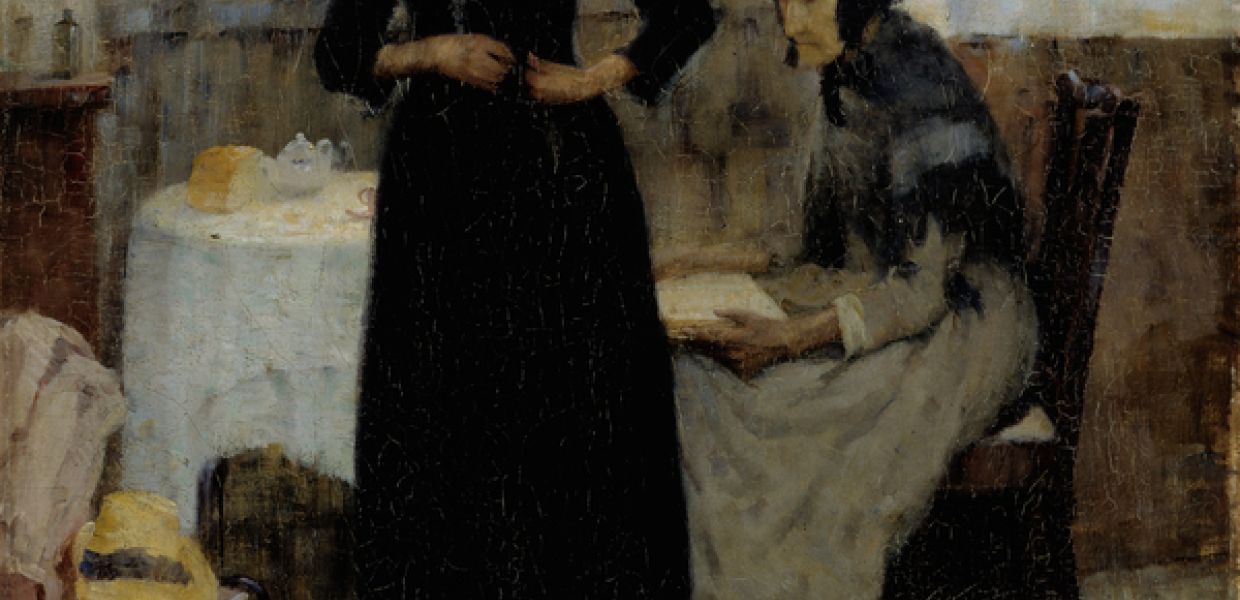Choosing a country's artworks for Europeana 280: Finland

This week, on 21 April, we'll launch Europeana 280 with a #BigArtRide event taking place in both Brussels and Amsterdam, and the introductory chapter of our brand new virtual exhibition, Faces of Europe, which includes awe-inspiring works from all 29 countries taking part in the campaign.
We also continue this weekly blog series, finding out some of the back stories behind selections. This week, Europeana 280’s Exhibition Coordinator Ann Maher highlights nominations from Finland.
When one of Finland’s best-loved paintings was first displayed in 1903 at the annual exhibition of the Finnish Art Society, there was no title for the work - simply a dash. This was the artist’s way of saying that there was no single interpretation or reading of the painting. It’s a reminder that, while we get a fascinating insight into how countries see themselves through their cultural choices for Europeana 280, over 300 artists will also challenge us as individuals. The Wounded Angel by Hugo Simberg (it eventually acquired a title) is one of many fascinating choices from Finland whose nominations were coordinated by the Finnish National Gallery. What are the highlights of their final selection?
Father of Finnish arts
Robert Wilhelm Ekman (1808-1873) has often been dubbed the pioneer and father of Finnish fine arts. He studied at the Royal Swedish Academy of Arts from 1824 and received a scholarship to fund his travels in the Netherlands, France and Italy. But even as a student, Ekman wanted to portray ordinary people. The nomination for Europeana 280, Kreeta Haapasalo - Playing the Kantele in a Peasant Cottage from the Finnish National Gallery, shows different strata of society joined together to celebrate their common musical heritage. The historical context of this painting is the Finnish ‘national awakening’ of the mid-19th century when Finnish culture – particularly music and song - was promoted as a means of nation building. The reality (as shown by Tsar Alexander’s portrait hanging on the wall) was that Finland would remain a Grand Duchy of Russia until 1917.
But despite the political uncertainties, the last few decades of the 19th century are considered part of the golden age of Finnish art. As their country moved away from historic ties to Russia and Sweden, artists looked beyond their borders for cultural inspiration and many of them were drawn to Paris.

Out into the World (1889), Maria Wiik, Finnish National Gallery, CC BY
Changing roles for women at the end of the 19th century as portrayed by Finnish artist Maria Wiik. A bronze medal winner at the Exposition Universelle of 1900.
International exposure
Albert Edelfelt (1854-1905) was one of the first artists from Finland to gain international fame. He studied at the drawing school of the Finnish Art Society and at the Antwerp Academy of Art in Belgium before stating at the Ecole Nationale des Beux Arts where he soon won medals and awards. The selection for Europeana 280, The Luxembourg Gardens, Paris, is the only large-scale work he made depicting Paris and symbolizes his close relationship with the city and how it was the epicentre of the art world in those times. The Exposition Universelles (a form of 19th century madness, according to Gustave Flaubert) were an important space for artists to promote their work. In Paris in 1900, the Finnish Pavilion designed by Eliel Saarinen was a triumph and Finnish artists, selected by Edelfelt (and including Simberg), also exhibited in the Russian fine arts section in the Grand Palais on the Champs-Elysées.
Out into the World (1889), by Maria Wiik, was a bronze medal winner at the 1900 Exposition Universelle. Women played a prominent role in Finnish arts during this period and Wiik was a key member of the Scandinavian group of artists in Paris at the end of the 1870s. She painted light-filled landscapes, and like other plein-air artists, painted in Brittany, Pont-Aven and also in St Ives, Cornwall, but was particularly known for insightful portraits.
Finnish Modernism
Later 20th century art movements were significant in Finland and nominations for Europeana 280 include examples of several including cubism, modernism and symbolism. Yrjö Ollila was an impressionist and member of the Septem group that set up in 1909, but in the 1920s, he lived in Paris with his family and his painting style changed. The work nominated for Europeana 280 is Hearing the Homework and an example of 1920s classicism.
Vilho Lampi is considered a tragic figure in Finland due to the manner of his death. On 17 March 1936, he threw himself into the River Oulujoki in his hometown of Oulu and drowned. His body was found later that spring. The self-portrait chosen for the collection is an example of magic realism where representational art is mixed with elements of fantasy. For the viewer (who is addressed directly), there’s an air of mystery or ambiguity. What seems like an ordinary scene is not quite what it seems.
We look forward to unveiling more surprising art selected for the Europeana 280 campaign very soon. In the meantime, follow the conversation on Twitter via #Europeana280.
